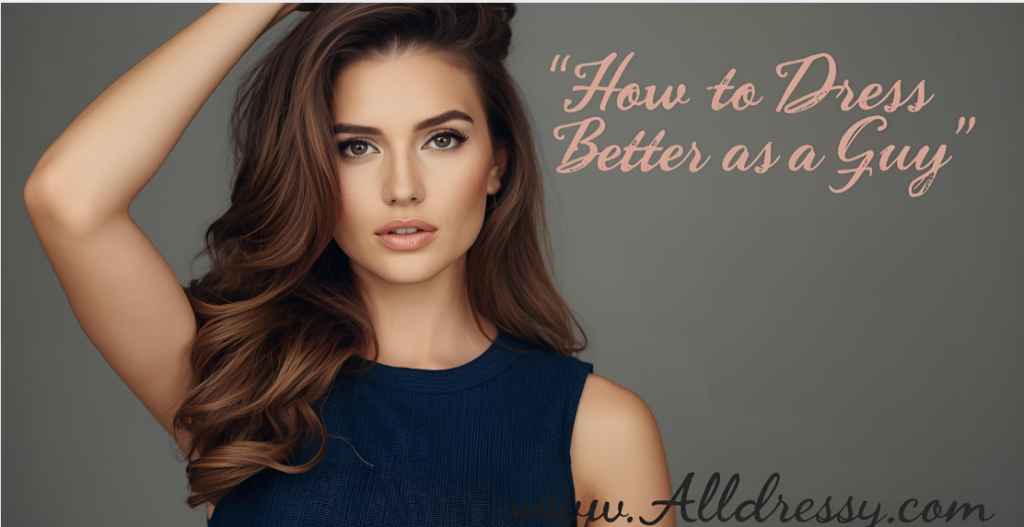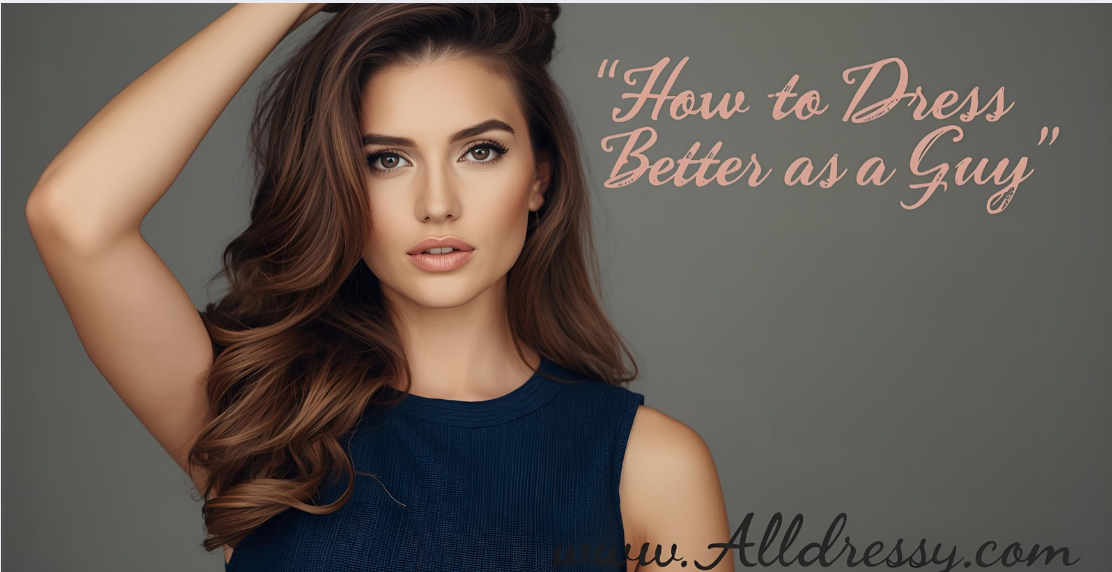The question of how to dress better as a guy is more than just a matter of buying new clothes. It’s about cultivating confidence, expressing your identity, and navigating the world with a sense of self-assuredness. Many men believe that dressing well is complicated, expensive, or reserved for a select few. This is a myth. Dressing well is a skill, and like any skill, it can be learned, practiced, and mastered. This ultimate guide will demystify the process, breaking it down into actionable steps that will transform your approach to clothing, from building a foundational wardrobe to understanding the nuances of fit and personal style. Whether you’re starting from scratch or looking to refine your look, this article is your roadmap to looking and feeling your best.
Why Learning How to Dress Better as a Guy Matters

Before we dive into the “how,” it’s crucial to understand the “why.” Your appearance is the first thing people notice, and it communicates non-verbally before you even speak. Dressing well is not about vanity; it’s about respect. It shows respect for yourself, the people you’re with, and the occasion. The benefits are tangible:
- Boosted Confidence: When you know you look good, you carry yourself differently. This self-assurance positively impacts your personal, social, and professional interactions.
- Positive First Impressions: In both dating and career advancement, a sharp appearance can open doors. It signals competence, attention to detail, and professionalism.
- Simplified Daily Life: A well-curated wardrobe eliminates the morning “what should I wear?” stress. Getting dressed becomes a quick, effortless process.
The Golden Rule: Fit is King

If you take only one piece of advice from this guide, let it be this: The fit of your clothing is the single most important factor in dressing well. An expensive, stylish garment that fits poorly will always look worse than a basic, affordable item that fits perfectly.
A Breakdown of Proper Fit:
- Shirts (Dress and Casual): The seams of the shirt should sit perfectly on the edge of your shoulders. When you button the collar, you should be able to comfortably fit one or two fingers inside. The body of the shirt should skim your torso without pulling or billowing—often called the “slim fit” sweet spot. The cuff should end at the base of your thumb.
- Trousers and Jeans: The waist should sit comfortably on your hips without a belt straining. There should be little to no break (where the fabric meets the shoe) for a modern look. The leg should taper slightly from the thigh down without being skin-tight. Avoid excessive stacking (bunching of fabric) around the ankles.
- Suits and Blazers: This is where precision is paramount. The jacket shoulders must align with your own—no overhang or gaps. The jacket should close without pulling, creating an “X” shape. You should be able to comfortably slide a flat hand under the lapels when buttoned. Sleeve length should show about a quarter to a half-inch of your dress shirt cuff.
- Outerwear: Coats and jackets should be comfortable enough to wear over a sweater or blazer without feeling restrictive. The length should be proportional to your body.
Actionable Tip: Find a good local tailor. Alterations are not a luxury; they are a secret weapon. Hemming trousers or taking in the sides of a shirt is inexpensive and will elevate your entire look instantly.
Building Your Foundation: The Essential Wardrobe
You don’t need a closet overflowing with clothes. You need a curated collection of versatile, high-quality basics that can be mixed and matched to create countless outfits. This is the core principle of how to dress better as a guy.
1. The Core Tops:
- Quality White and Navy T-Shirts: Opt for 100% cotton or a cotton-pima blend. They should be substantial enough not to be see-through.
- The Oxford Cloth Button-Down Shirt: A timeless classic in light blue and white. It can be dressed up with chinos or down with dark jeans.
- A Versatile Polo Shirt: The perfect smart-casual item. Choose well-fitting pique knit polos in neutral colors like grey, navy, or burgundy.
- A Simple Sweater: A fine-gauge merino wool or cashmere-blend sweater in grey or navy is incredibly versatile for layering.
2. The Essential Bottoms:
- Dark Wash, Well-Fitted Jeans: Look for a dark, uniform indigo with no fading or whiskering. A slim or straight-leg cut is most versatile.
- Chinos in Neutral Colors: Khaki, navy, and olive green are the holy trinity. They bridge the gap between jeans and formal trousers perfectly.
- One Great Pair of Trousers: A pair of grey wool trousers is incredibly versatile. They can be paired with a blazer for a business-casual look or with a sweater for a smart evening out.
3. The Outerwear Staples:
- A Structured Navy Blazer: It can be worn with everything from jeans to dress trousers, instantly elevating your outfit.
- A Versatile Mid-Weight Jacket: A bomber jacket, harrington jacket, or field coat in a neutral color like olive, navy, or tan will cover you for three seasons.
4. The Footwear Foundation:
- Brown Leather Dress Boots/Shoes: A pair of brown leather Chelsea boots or Derby shoes are more interesting and versatile than basic black dress shoes.
- Minimalist White Sneakers: A clean, leather white sneaker is a non-negotiable for modern casual wear.
- A Reliable Casual Shoe: Think leather boat shoes, canvas sneakers, or rugged boots depending on your style.
Mastering Color and Pattern Coordination
Understanding how to combine colors and patterns is what separates a well-dressed man from someone who just wears nice clothes.
The Beginner’s Formula:
Stick to a neutral base (navy, grey, khaki, white) and add one “accent” color. For example, navy chinos + a white t-shirt + a burgundy sweater.
Understanding the Color Wheel:
- Complementary Colors: Colors opposite each other on the wheel (e.g., blue and orange, red and green). Use these sparingly as bold accents—a green pocket square with a navy suit, for instance.
- Analogous Colors: Colors next to each other on the wheel (e.g., blue, blue-green, green). This creates harmonious, easy-on-the-eyes outfits.
Mixing Patterns:
Start simple. The key is to vary the scale of the patterns. Pair a thin pinstripe shirt (small-scale pattern) with a windowpane blazer (large-scale pattern). A good rule of thumb is to ensure the patterns share at least one common color.
Developing Your Personal Style Identity
Following the rules is the first step. The ultimate goal is to use those rules to express who you are. This is the journey from dressing well to dressing well for you.
1. Find Your Inspiration: Create a folder on your phone or a private Pinterest board. Whenever you see an outfit you like—in a movie, on the street, on social media—save it. Don’t judge it, just collect. Over time, you’ll see patterns emerge. Do you lean towards minimalist looks? Rugged workwear? Sharp tailoring?
2. Define Your Lifestyle Needs: Be honest with yourself. If you work from home and spend weekends outdoors, investing in five suits is a waste. Your wardrobe should reflect your actual life. Allocate your budget accordingly—more on high-quality casualwear in this example.
3. The “One In, One Out” Rule: To avoid a cluttered closet, adopt this rule. When you buy a new item, consider donating or discarding an old one. This forces you to be more intentional with your purchases.
Grooming and The Finishing Touches
How to dress better as a guy extends beyond the clothes themselves. The details complete the picture.
- Grooming: A neat haircut, trimmed facial hair (or a clean shave), and maintained eyebrows make a world of difference.
- Fragrance: Find a signature scent that isn’t overpowering. Apply it to pulse points (wrists, neck) so it projects subtly.
- Accessories:
- Watch: A simple, classic timepiece is the ultimate functional accessory.
- Belts: Your belt should generally match your shoes in terms of formality and color.
- Socks: In formal settings, they should match your trousers. In casual settings, they are a chance to show personality.
- Bags: A quality leather messenger bag or a minimalist backpack is both practical and stylish.
Building a Budget-Conscious Strategy
Dressing better doesn’t require a massive budget. It requires a smart strategy.
- Invest in the Core: Spend more on items you’ll wear constantly—shoes, a good winter coat, a blazer. These are worth buying for quality and longevity.
- Save on Trends: If you want to experiment with a trend, do it with a cheaper, fast-fashion item. If you wear it to death, you can then consider investing in a high-quality version.
- Embrace Secondhand: Thrift stores, consignment shops, and online resale platforms are treasure troves for high-quality, unique pieces at a fraction of the retail price.
Frequently Asked Questions (FAQs)
Q1: I’m on a very tight budget. Where do I even start?
Start with the absolute basics: one pair of dark, well-fitting jeans, a solid-color t-shirt, and a pair of clean white sneakers. From there, add one item at a time, focusing on versatility. A $20 shirt that fits you perfectly (perhaps with a $10 tailor’s hem) will look better than a $100 shirt that doesn’t.
Q2: How many of each clothing item do I really need?
There’s no magic number, but a good starting point is: 7-10 t-shirts, 5-7 dress/casual shirts, 2-3 sweaters, 2-3 pairs of jeans/chinos, one versatile suit, one blazer, and 3-4 pairs of shoes that cover different occasions.
Q3: Are there any “rules” I should never break?
The most important rules are about fit and appropriateness. Beyond that, most “rules” are guidelines. However, socks with sandals and wearing a hat indoors are generally best avoided.
Q4: How can I make my casual outfits look more put-together?
The secret is to incorporate one “structured” item. Pair your jeans and t-shirt with a smart bomber jacket or a blazer instead of a hoodie. Swap your running sneakers for clean leather sneakers or boots.
Q5: I have to wear a suit for work. How can I avoid looking boring?
Play with textures and accessories. Instead of a standard white shirt, try a light blue or subtle striped one. Add a textured tie (like a knit tie) or a interesting pocket square. Your choice of tie knot and shoes (e.g., brown suede loafers) can also add personality.
Q6: How often should I replace my core items?
Replace items when they show signs of wear that can’t be repaired: thinning fabric on t-shirts, fraying collars on shirts, worn-out heels on shoes. High-quality items, with proper care (like shoe polishing), can last for many years.
Conclusion: Your Journey to Dressing Better Starts Now
Learning how to dress better as a guy is an ongoing journey of self-discovery, not a final destination. It’s about making incremental improvements, learning from mistakes, and, most importantly, developing a sense of confidence that comes from knowing you present the best version of yourself to the world.
Start small. Today, take one pair of trousers to the tailor. This week, clear out the clothes that no longer fit or serve you. Next month, invest in one high-quality core item you know you’ll wear for years. The principles in this guide—mastering fit, building a foundation of essentials, understanding color, and adding personal flair—are your toolkit. Use them, experiment with them, and make them your own. Your style is a lifelong project, and there is no better time to begin than now.

